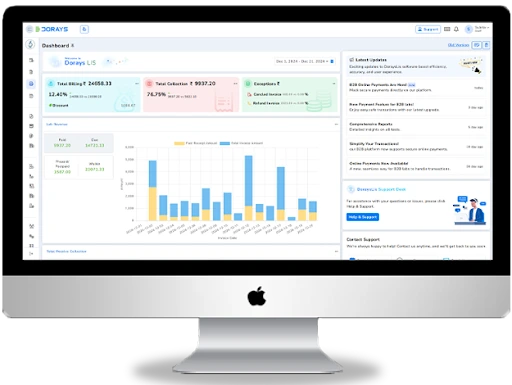
Bleeding Time (BT) and Clotting Time (CT) report format
What is a Bleeding Time (BT) and Clotting Time (CT) Test?
These tests measure a patient's ability to bleed and clot. BT and CT evaluate the body’s hemostatic mechanism. These tests offer valuable insight into the blood’s clotting ability and can aid in identifying bleeding diathesis. Specifically, BT assesses the time required for hemostasis following a superficial wound, whereas CT assesses the time required for clot formation following vascular injury.
These evaluation procedures are of great significance in patients presenting with abnormal bleeding and excessive clotting or blood disorders: hemophilia, von Willebrand disease, or dysfunction in platelet activity and number. Moreover, these tests can assist in ascertaining whether a person has an elevated risk of abnormal bleeding during surgical procedures or after traumatic injuries.
What constitutes a Bleeding Time (BT) and Clotting Time (CT) Report Format?
As the name suggests, a Bleeding Time (BT) and Clotting Time (CT) Report provides the results of the two tests. Usually, the report contains details of the patient’s clotting ability which includes the interval of time for bleeding to cease (BT) and the lifespan for blood to clot (CT). These values are assessed against normal reference values, and any abnormalities are commented upon by the physician.
The report format typically includes:
- Patient Information : Name, age, sex, and relevant medical history.
- Test Name : Bleeding Time (BT) and Clotting Time (CT).
- Test Results : The duration of the bleeding and clotting times.
- Reference Ranges : Normal times for BT and CT.
- Interpretation : Physician’s comments based on the test results.
- Remarks : Additional notes, such as the need for further tests or treatments.
Tests Included in BT and CT Report
Test | Description |
Bleeding Time (BT) | Measures the time it takes for a small puncture wound to stop bleeding. It helps evaluate platelet function and vascular integrity. |
Clotting Time (CT) | Measures the time it takes for blood to clot after being drawn into a test tube. It assesses the function of clotting factors. |
Key Parts of a BT and CT Report
Part | Description |
Bleeding Time (BT) | The time taken for the bleeding to stop after a small incision or puncture is made in the skin. |
Clotting Time (CT) | The time taken for blood to form a clot in a test tube after the blood sample is collected. |
Test Results | Displays the duration of the bleeding and clotting times. |
Reference Ranges | The normal values for BT and CT to compare with the patient’s results. |
Interpretation | Explanation of the results, such as whether the values are within normal limits or indicate a bleeding disorder. |
Normal Ranges for BT and CT
Test Parameter | Normal Range |
Bleeding Time (BT) | 2 - 9 minutes (depending on the method used and the area of the skin tested). |
Clotting Time (CT) | 4 - 10 minutes (varies depending on the method of testing). |
Parameters to Consider in a BT and CT Report
Parameter | Interpretation |
Bleeding Time (BT) | Prolonged BT : Suggests possible platelet dysfunction, vascular abnormalities, or a bleeding disorder. |
Clotting Time (CT) | Prolonged CT : Indicates potential issues with clotting factors such as hemophilia, vitamin K deficiency, or liver dysfunction. |
BT and CT Report Format Guidelines
- Ensure the report includes Bleeding Time (BT) and Clotting Time (CT) values, as well as any other relevant tests related to the clotting system.
- The results should be marked as Normal or Abnormal with the reference ranges for comparison.
- The interpretation should explain whether the values are within normal ranges or indicate a potential bleeding or clotting disorder.
- Additional remarks should be added if there are any concerns regarding other clotting factors or abnormal results.
- Tables should be used to clearly display the test results, normal ranges, and interpretations.
- Include patient details and relevant medical history for context.
What Do the Results Imply?
The Bleeding Time (BT) and Clotting Time (CT) test results can have significant implications for diagnosing bleeding and clotting disorders. Here’s what the results might indicate:
- Prolonged BT : A prolonged bleeding time suggests that there may be a problem with platelet function or blood vessel integrity. It could be an indicator of conditions such as von Willebrand disease, platelet function disorders, or vascular disorders.
- Normal BT : Indicates that the platelet function and vascular integrity are normal. This suggests there is no issue with stopping blood loss at the vascular level.
- Prolonged CT : If clotting time is prolonged, it could indicate a clotting factor deficiency, such as in hemophilia, or vitamin K deficiency, or problems with the liver, which is responsible for producing clotting factors.
- Normal CT : Suggests that clotting factors are functioning normally, and the blood is clotting within the expected time range.
Download BT and CT Report Sample
You can download a BT and CT Report Sample here to better understand the format and content of the report.
BT and CT Report Interpretation
Test | Interpretation |
Bleeding Time (BT) | Prolonged : Indicates potential issues with platelet function or vascular health. Follow-up tests may be needed to diagnose specific disorders. |
Clotting Time (CT) | Prolonged : Suggests a clotting factor deficiency or liver dysfunction. Follow-up tests (e.g., PT, aPTT) may be needed to confirm specific clotting factor issues. |

Effortless Lab Management Starts Here!
Experience the future of lab operations. One click to revolutionize your lab.


